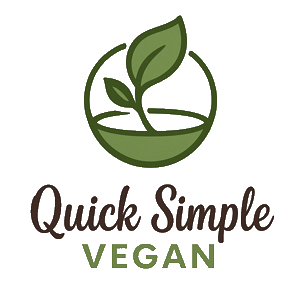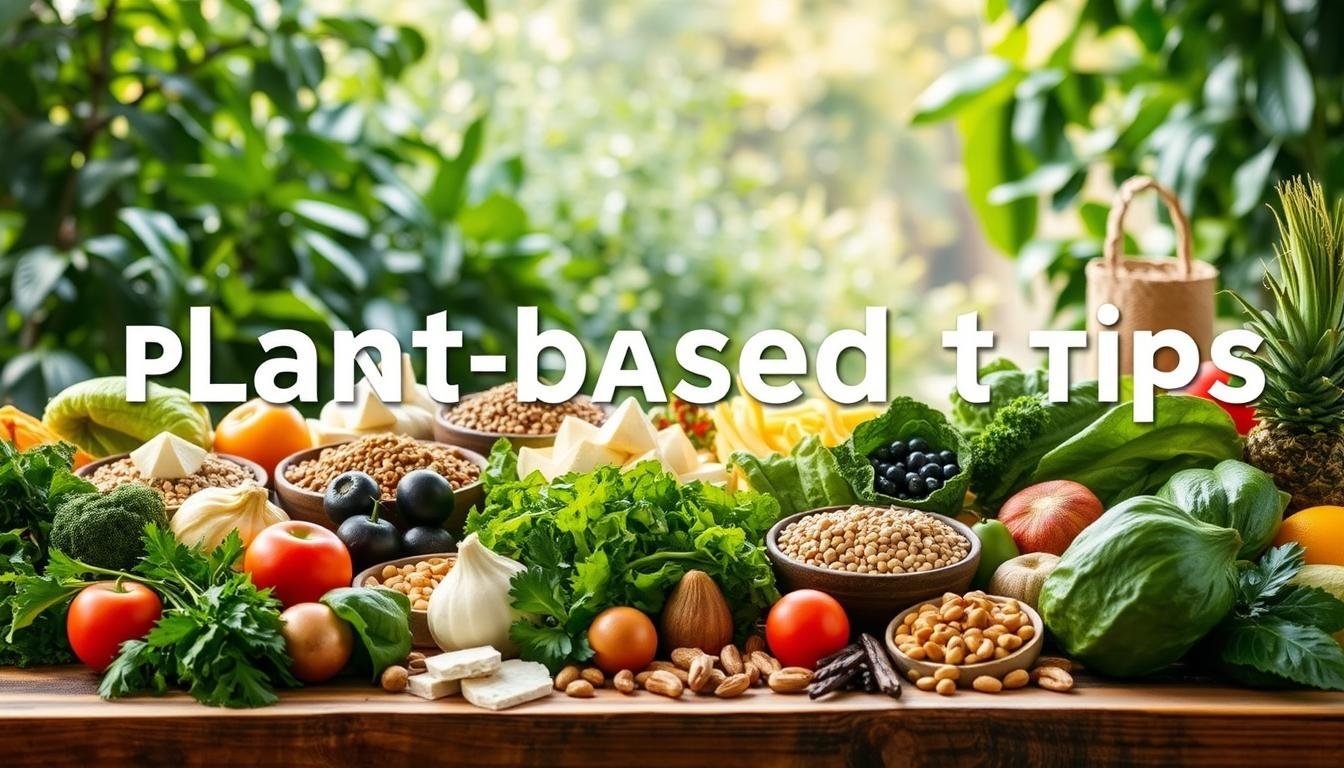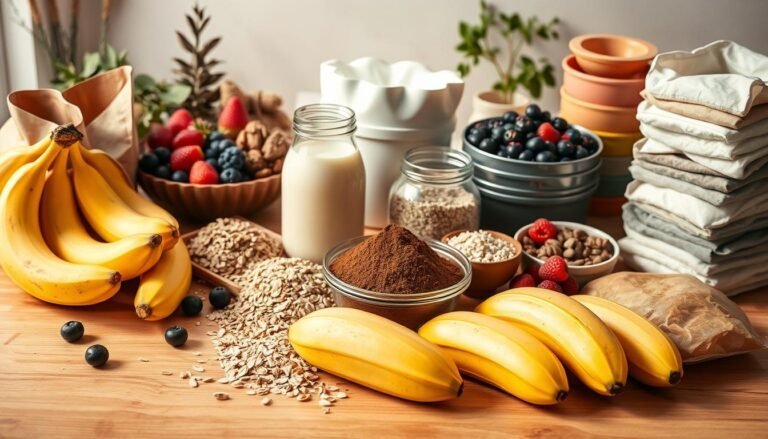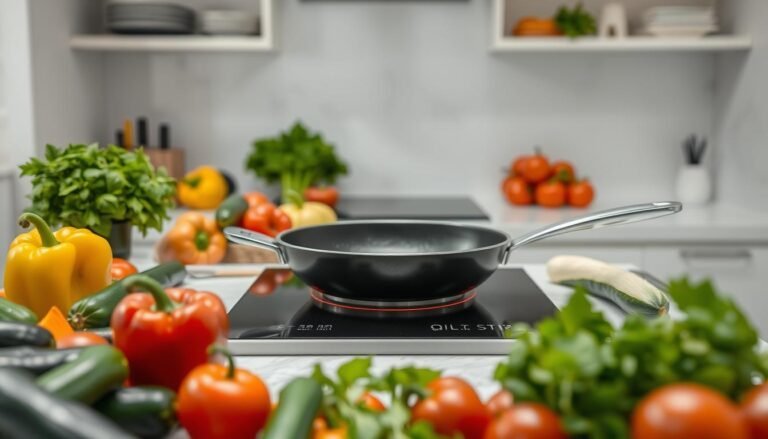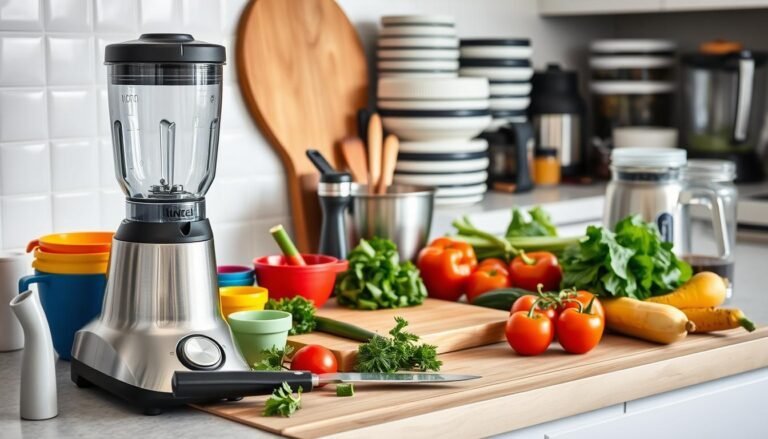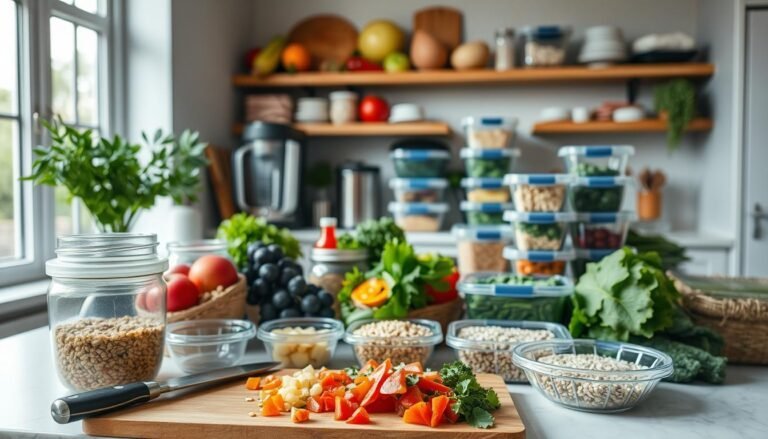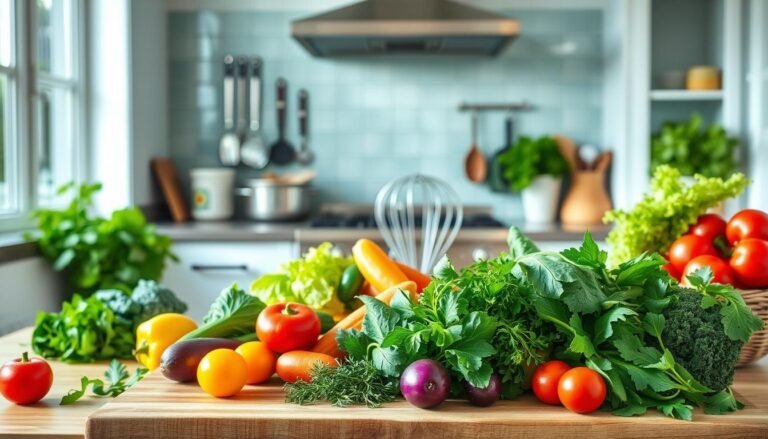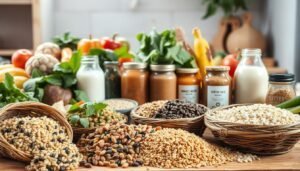Disclosure: This Post Contains Affiliate Links; We earn a commission on purchases.
Starting a plant-based diet can change your life. It brings health perks and new cooking fun. You can swap animal products in your meals with vegan substitutes for milk, cheese, and eggs.
Just a few changes in your cooking can make your favorite dishes vegan-friendly. This guide will show you how. You’ll get plant-based diet tips and learn about vegan cooking.
Key Takeaways
- Easy substitutions for common animal products
- Benefits of adopting a plant-based diet
- Tips for incorporating vegan cooking into your daily routine
- Exploring the variety of vegan substitutes available
- Simple swaps for your favorite meals
Why Consider Plant-Based Substitutions
Adding plant-based options to your meals is easy and good for you. It also helps the planet. More people are choosing these options for their health, the environment, and animal welfare.
Health Benefits of Reducing Animal Products
Eating less meat can make you healthier. It lowers your risk of heart disease, diabetes, and some cancers. A vegan diet is full of nutrients and supports your health.
Environmental Impact of Plant-Based Choices
Animal products harm the environment a lot. They cause greenhouse gas emissions and deforestation. Plant-based foods help reduce these problems and make food production better for the planet.
Ethical Considerations and Personal Choice
Many choose plant-based foods for animal welfare reasons. They support farming that is kinder to animals and better for the planet.
Knowing the benefits of plant-based foods helps you make better choices. These choices are good for your health, the planet, and animals.
Essential Pantry Staples for Plant-Based Cooking
To cook plant-based meals well, you need the right pantry items. A tidy pantry makes cooking meat-free dishes easier and faster.
Protein Sources to Keep on Hand
Protein is key in any meal. For plant-based cooking, some must-haves include:
Legumes, Tofu, and Tempeh
Legumes like lentils, chickpeas, and black beans are full of protein. Tofu and tempeh, made from soybeans, are great meat substitutes. They can be marinated and cooked in many ways.
Nuts, Seeds, and Nutritional Yeast
Nuts and seeds, like almonds and chia seeds, are good for protein and healthy fats. Nutritional yeast has a cheesy taste. It’s a favorite in vegan recipes, adding flavor.
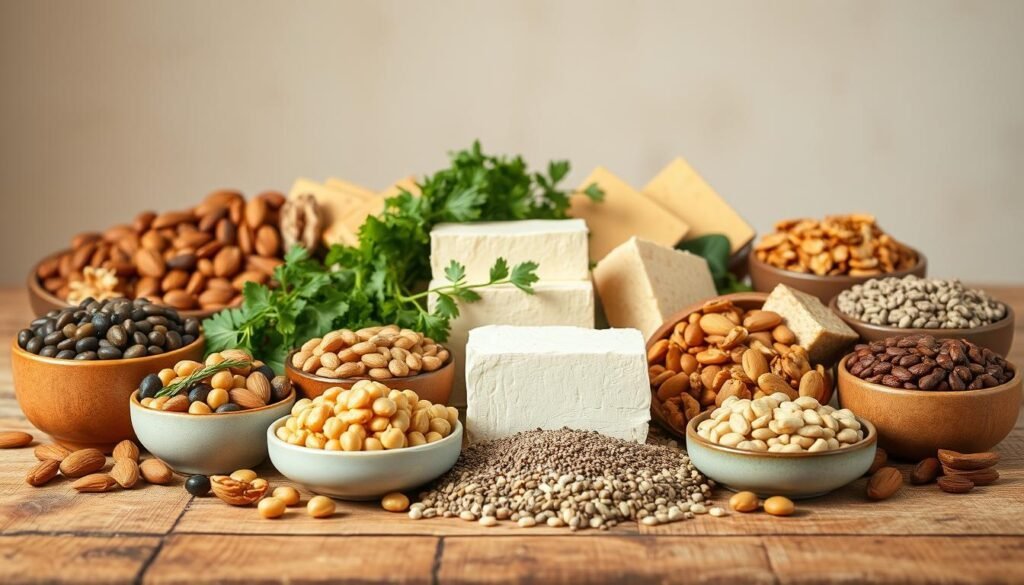
Versatile Binders and Thickeners
Binders and thickeners are key in plant-based cooking. They help dishes have the right texture. Flaxseed meal and chia seeds mixed with water are good binders. Cornstarch, arrowroot powder, and tapioca flour thicken sauces and desserts well.
Flavor Enhancers for Plant-Based Dishes
Flavor enhancers make plant-based dishes taste amazing. Garlic, onions, ginger, and spices are essential. Soy sauce, tamari, and nutritional yeast add savory and cheesy flavors.
Replacing Meat in Your Favorite Recipes
It’s easy to swap out meat in your favorite dishes with plant-based options. This is great for health, the planet, or animal welfare reasons. You can enjoy tasty food without meat.
Beef Substitutes and Applications
Beef can be hard to replace because of its taste and texture. But, there are many good alternatives.
Ground Beef Alternatives
Mushrooms, like cremini or shiitake, are good for ground beef. They have a meaty feel. Tofu and tempeh also work well because they soak up flavors. Textured vegetable protein (TVP) is another choice for its texture and versatility.
Steak and Roast Replacements
Portobello mushrooms can be marinated and grilled like steak. Jackfruit is also good, when seasoned and slow-cooked, it feels like roast beef.
Poultry Alternatives That Satisfy
There are many plant-based options for poultry. Tofu and seitan can replace chicken or turkey. They have a similar texture when cooked right. For shredded or diced poultry, mushrooms or eggplant are great.
Plant-Based Options for Seafood Dishes
Seafood fans have many plant-based choices. Tofu or tempeh marinated in seaweed tastes like fish. For a seafood feel, try seaweed-wrapped vegetables or mushrooms. There are also plant-based seafood products made from soy or pea protein.
Using these alternatives, you can make your favorite dishes without meat. Try different substitutes and seasonings to find the best fit for your recipes.
Guide to Substituting Animal Products in Everyday Dishes
Switching to vegan cooking is easy with the right guide. You can change your breakfast, lunch, dinner, or snacks. There are many vegan alternatives to try. These substitutes add flavor to your meals while following a plant-based diet.
Breakfast Transformations
Starting your day with vegan breakfast is simple. There are many substitutes for animal products. If you want to avoid eggs, there are several options.
Egg-Free Morning Meals
Try tofu scrambles or chia seed puddings for egg-like breakfasts. For a traditional taste, make a vegan omelette with tofu and veggies.
Dairy-Free Breakfast Classics
Switch to dairy-free milk like almond, soy, or oat milk for cereal. Use dairy-free substitutes like coconut oil or vegan butter for pancakes and waffles.
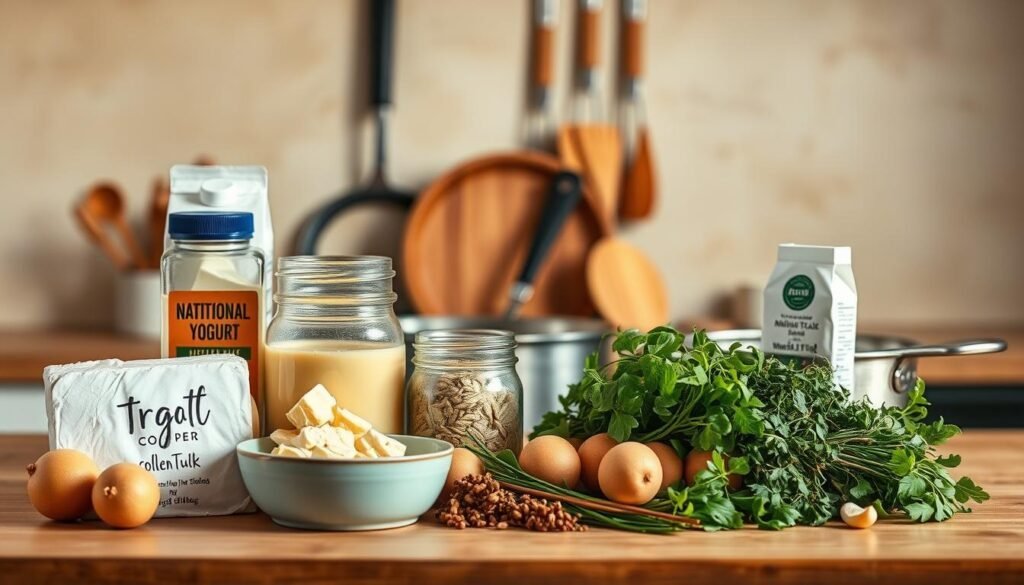
Lunch and Dinner Swaps
For lunch and dinner, swap meat with plant-based proteins. Use tempeh, seitan, and textured vegetable protein (TVP). Marinate and cook them like meat.
Snack and Appetizer Alternatives
Snacks and appetizers can also be vegan. Enjoy vegan cheese platters, plant-based dips like hummus, and crunchy vegetable snacks. For a treat, try vegan versions of fried snacks.
Dairy-Free Alternatives That Actually Work
More people are choosing dairy-free diets. This means finding good substitutes is key for cooks and chefs. Luckily, there are many dairy-free options for different tastes and needs.
Milk, Cream, and Yogurt Substitutes
Dairy-free milks like almond, soy, and oat milk are popular. They work well in cereals, baking, and cooking. Coconut cream and soy yogurt are great for cream and yogurt, giving similar textures and uses.
- Almond milk and other nut milks for a low-calorie option
- Coconut cream for richness in soups and desserts
- Soy yogurt for a protein-rich dairy-free yogurt alternative
Cheese Alternatives for Every Occasion
Cheese substitutes have improved a lot. Now, there are melting cheeses for hot dishes and artisanal options for cheese boards. Vegan mozzarella, cashew cheese, and nutritional yeast-based cheeses are favorites.
Melting Cheeses for Hot Dishes
Vegan mozzarella and other plant-based cheeses are great for melted dishes. They melt and stretch like dairy cheese.
Artisanal Cheese Board Options
For a dairy-free cheese board, try cheeses made from nuts, seeds, or soy. These cheeses can age and get complex flavors, like traditional cheeses.
Butter and Egg Replacements for Baking
Replacing butter and eggs in baking is easy with the right choices. Vegan butter and coconut oil can take the place of butter. Flaxseed, chia seeds, and egg replacers can stand in for eggs, depending on the recipe.
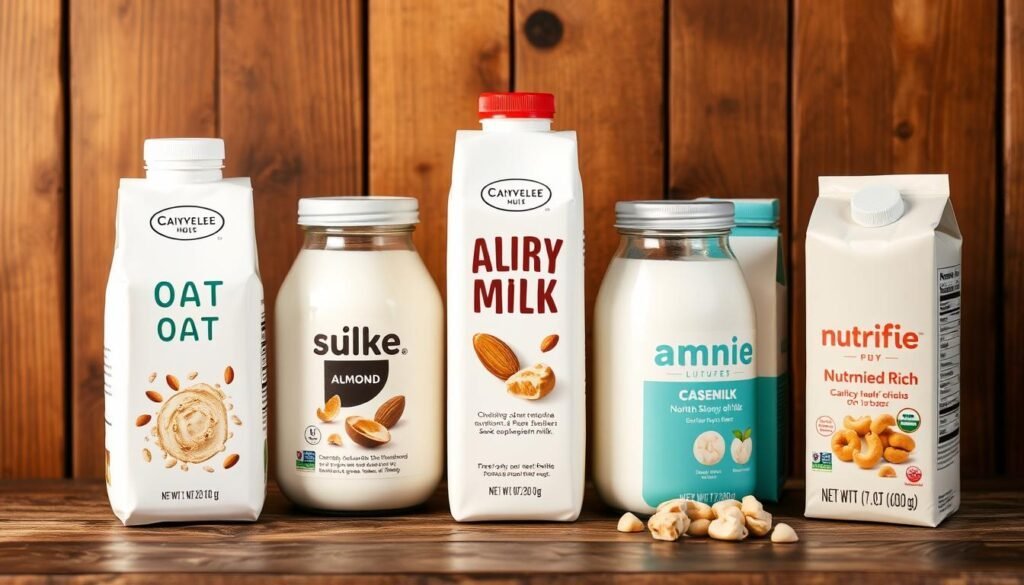
Using these dairy-free alternatives in cooking and baking lets you make many dishes. You don’t have to give up taste or texture. These substitutes are perfect for a vegan diet or just cutting down on dairy.
Troubleshooting Common Substitution Challenges
Learning to cook vegan means knowing how to fix common problems. When you swap out animal products, you might face issues like cooking time, flavor, and texture differences.
Adjusting Cooking Times and Temperatures
Plant-based foods cook differently. Tofu can dry out if cooked too long, while tempeh needs more time to get right. Adjusting cooking times and temperatures is key to success.
Balancing Flavors When Using Substitutes
Vegan cooking swaps can make dishes taste off or unbalanced. Spices, herbs, and ingredients like nutritional yeast can help balance flavors.
Addressing Texture and Binding Issues
Texture and binding are big challenges in vegan cooking. Flaxseed, chia seeds, and aquafaba can help bind. Choosing the right texture for your substitute is essential.
By tackling these common issues, you can improve your vegan cooking. You’ll enjoy a wide variety of plant-based meals.
Conclusion: Embracing a More Plant-Based Kitchen
Substituting animal products in everyday dishes can greatly benefit our health, the environment, and animals. By adding plant-based diet tips to your daily life, you can make your kitchen more nourishing and green.
Many people have switched to a plant-based diet and feel more energetic and healthy. With the right pantry items and simple swaps, you can enjoy a plant-based lifestyle. Start small and have fun trying new foods and recipes.
Choosing a plant-based kitchen helps you and the planet. So, why wait? Try new recipes, experiment with different ingredients, and enjoy cooking with plants.
FAQ
What are the benefits of a plant-based diet?
How do I stock a pantry for vegan cooking?
What are some good substitutes for meat in recipes?
How do I replace dairy products in recipes?
What are some common challenges when substituting animal products, and how can I overcome them?
Can I stil enjoy my favorite comfort foods on a plant-based diet?
Are plant-based meat alternatives healthy?
How can I ensure I’m getting enough protein on a plant-based diet?

Focused on simplicity and flavor, Ryan helps readers create quick vegan meals and snacks without the overwhelm. Whether you’re new to vegan cooking or just want to keep it simple, Ryan’s tips, guides, and no-fuss approach make plant-based eating accessible and enjoyable for everyone.
Subscribe to Our Newsletter
